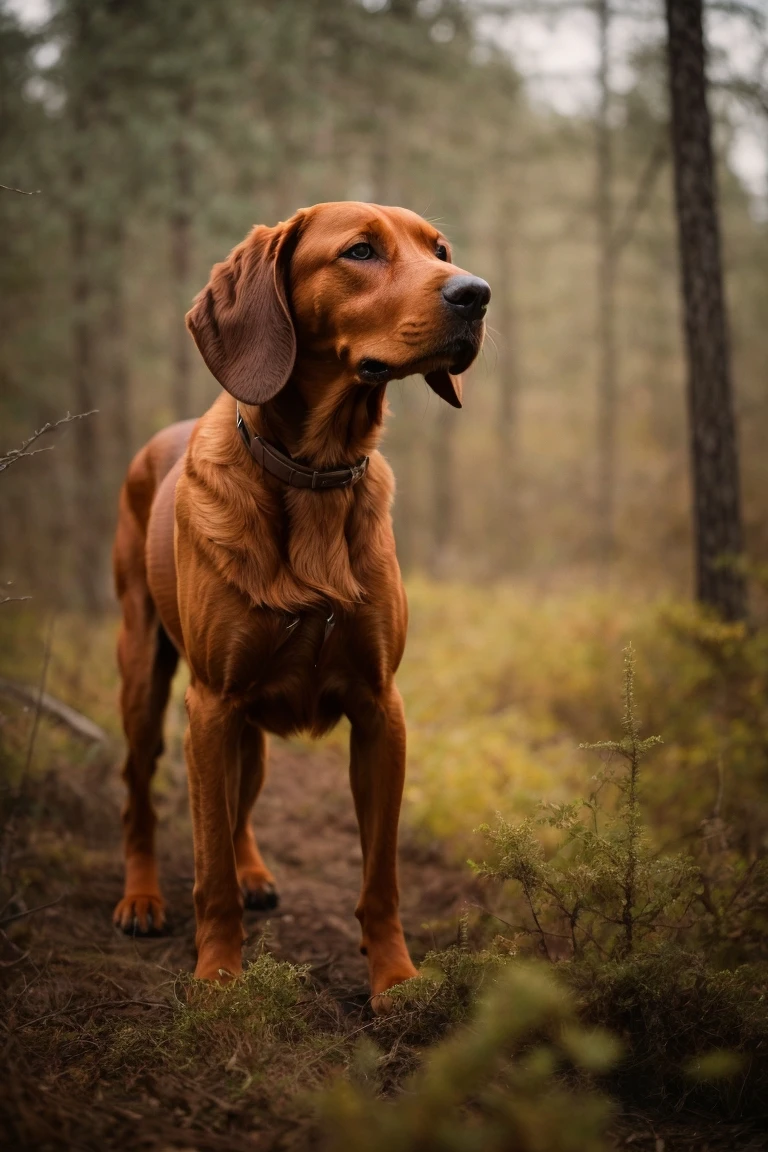Managing Redbone Coonhound Barking: Tips and Strategies

The Redbone Coonhound is a tenacious hunting breed known for its loud, baying bark that carries over long distances. Their vocal nature served them well trailing prey through Southern forests and swamps. However, excessive barking is less desirable in a suburban home! This article explores managing your talkative Redbone's barking tendencies.
Understanding Redbone Coonhound Barking
Redbones use various barks, howls, and baying noises to vocally communicate. Key reasons they bark include:
- Alert barking – Redbones serve as watchdogs, sounding a booming bark to alert families to anything unusual approaching their territory. Their guarding instincts are strong.
- Loneliness/attention-seeking – As pack animals, Redbones hate being left alone for long periods. Their barks may plead for company.
- Boredom – Under-exercised Redbones often bark excessively due to pent up energy and mental boredom. They need an outlet.
- Prey drive – Interesting sights and sounds like squirrels in the yard often stimulate excited reactive barking. They want to give chase!
- Greeting excitement – Some Redbones bark and howl happily when their beloved owners return home. Excessive greeting barking can be frustrating.
- Communication – Redbones are quite “talkative” with various howls, yips, and bays. But excessive noise-making can be a nuisance.
Understanding why your particular Redbone barks will inform training strategies to manage unwanted barking. Reducing boredom and loneliness are usually key.
Tips to Manage Redbone Coonhound Barking
With patience, consistency, and effort, you can curb excessive barking in your vocal Redbone Coonhound:
Provide plenty of exercise – Walks, playtime, and enriching activities go a long way towards preventing bored and pent-up dogs from nuisance barking. A tired Redbone is often a quieter one.
Limit outdoor access – If your Redbone barks constantly at passersby when left in the yard, restrict their unsupervised time outdoors until barking improves through training.
Address separation anxiety – If barking mainly occurs when left alone, treat the underlying anxiety through crate training, medication, age, and ensuring needs are met before departing.
Use background noise – A TV, radio, or fan running in the background can help soothe an anxious dog prone to barking when alone. The noise distracts them.
Teach a “quiet” cue – Train your Redbone to stop barking on command using positive reinforcement methods. Have family members practice this cue consistently when barking occurs using treats to reward quiet behavior.
Acknowledge alerts – When barking at unusual sights and sounds, thank your Redbone for the “alert” then encourage them to settle before the barking escalates out of control.
Ignore attention-seeking barking – Avoid inadvertently rewarding barking for attention. Wait for quiet moments to pet or play.
Avoid scolding – Yelling or punishment can actually encourage more barking in many dogs. Stay calm and redirect your Redbone to an appropriate quiet activity when barking occurs.
Contact a trainer – If excessive barking persists despite efforts, enlist a dog trainer or behaviorist for guidance on how to curb nuisance barking in your Redbone Coonhound.
With time, consistency, and effort, you can teach your vocal Redbone to use their “big bark” only for appropriate reasons.
Anti-Barking Devices
In resistant cases, specialized devices may help control excessive barking:
- Citronella collars – Collar sprays unpleasant citronella when barking is detected. Aim is to deter nuisance barking through negative associations.
- Ultrasonic devices – Emit unpleasant high-frequency sounds when barking occurs. However, effectiveness is questionable and risks exist.
- Shock collars – Collar delivers a light shock when activated by barking. Risks of fear, pain, and aggression exist. Should be avoid if possible.
- Noise detection collars – Collar provides a stimulus like a vibration or beep when barking is detected. Can mark the behavior without corrections.
While sometimes effective for stubborn cases, anti-barking devices are not an ideal solution. Focus first on addressing root causes like boredom and anxiety through humane approaches tailored to your dog’s needs.
When to See the Vet About Excessive Barking
Schedule a veterinary visit if excessive barking develops suddenly in a previously quiet dog. Medical issues may be to blame, especially in senior dogs. Potential health problems that can cause increased barking include:
- Pain or discomfort making dogs irritable and reactive
- Cognitive dysfunction syndrome, similar to Alzheimer’s in humans
- Vision or hearing loss causing disorientation and alarming your dog
- Medication side effects like increased anxiety or agitation
- Thyroid malfunction leading to anxiety and odd behaviors
Discuss any behavior changes with your vet to rule out underlying medical conditions first before assuming your dog has a training issue. Some later life barking has a health basis.
Be Realistic
While Redbone Coonhound barking tendencies can be minimized with effort, also remember this vocal breed will likely never be silent. Loud, baying barks are part of their heritage for signaling hunters during the chase. Instead, aim for a reasonable middle ground of controlled barking using positive training methods. Your neighbors will thank you!
With patience, consistency and by addressing root causes, most Redbone owners can achieve a bark volume they and their community can peacefully live with. Don't give up - seek professional advice if needed and know that curbing nuisance barking just takes time and diligent effort. The rewards of living with this energetic hound breed are well worth it!